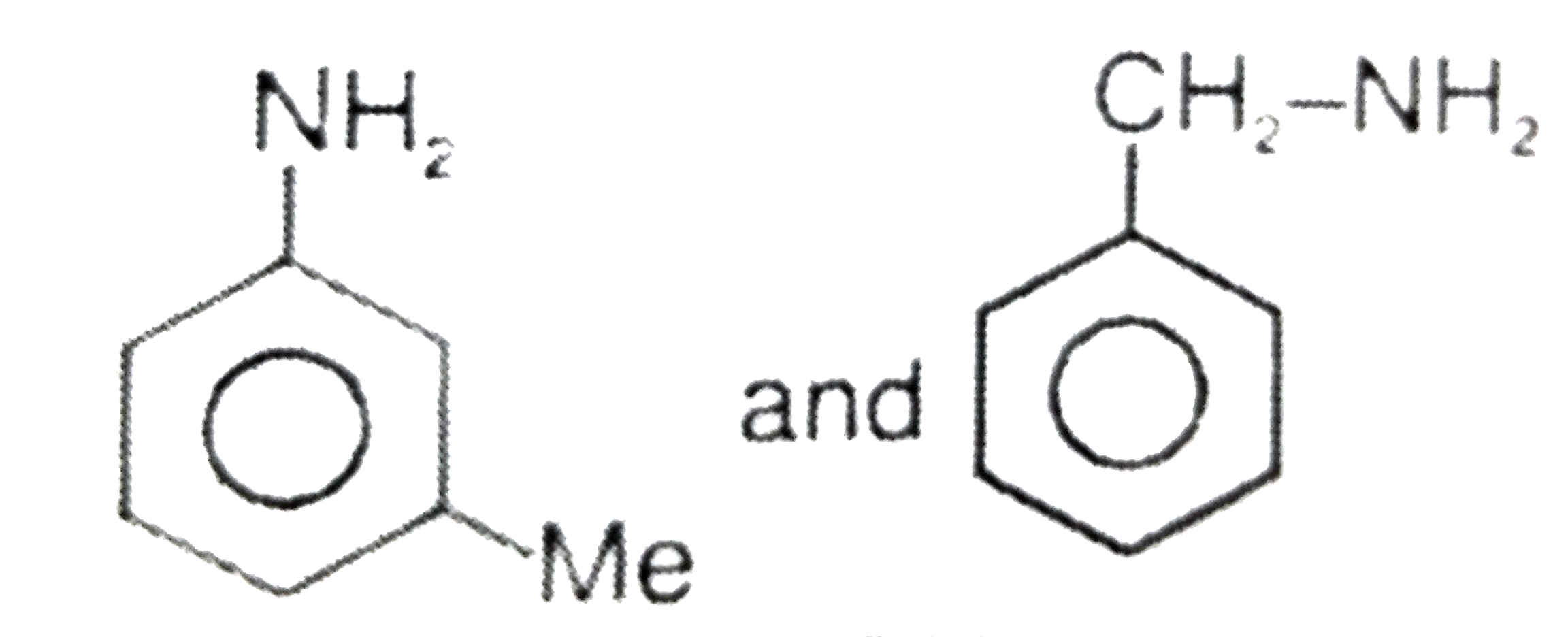Propyne and propene can be distinguished by :
Conc. H2SO4
Br2 in CCl4
Dil. KMnO4
AgNO3 in ammonia
The correct Answer is:d
To distinguish between propyne (an alkyne) and propene (an alkene), we can use the Tollen's test, which involves the use of silver nitrate (AgNO3) in ammonia. Here's a step-by-step solution:
1. Identify the Compounds:
- Propyne (C3H4) is an alkyne with a triple bond.
- Propene (C3H6) is an alkene with a double bond.
2. Choose the Test:
- We will use the Tollen's test, which involves AgNO3 in ammonia. This test is specific for terminal alkynes.
3. Reaction with Propyne:
- When propyne reacts with AgNO3 in ammonia, the terminal hydrogen of the alkyne is replaced by a silver ion (Ag+), forming a silver acetylide and producing a white precipitate of silver.
- The reaction can be represented as:
H3C−C≡C+AgNO3+NH3→H3C−C≡CAg+HNO3
- This results in the formation of a white precipitate of silver acetylide.
4. Reaction with Propene:
- When propene is treated with AgNO3 in ammonia, there is no reaction since propene does not have a terminal hydrogen that can be replaced by silver.
- The reaction can be represented as:
H3C−C=CH2+AgNO3+NH3→No Reaction
5. Conclusion:
- The formation of a white precipitate with propyne and no reaction with propene allows us to distinguish between the two compounds. Therefore, we can conclude that the correct method to distinguish propyne from propene is by using AgNO3 in ammonia.
Final Answer:
Propyne and propene can be distinguished by AgNO3 in ammonia.
- Propyne (C3H4) is an alkyne with a triple bond.
- Propene (C3H6) is an alkene with a double bond.
- We will use the Tollen's test, which involves AgNO3 in ammonia. This test is specific for terminal alkynes.
- When propyne reacts with AgNO3 in ammonia, the terminal hydrogen of the alkyne is replaced by a silver ion (Ag+), forming a silver acetylide and producing a white precipitate of silver.
- The reaction can be represented as:
H3C−C≡C+AgNO3+NH3→H3C−C≡CAg+HNO3
- This results in the formation of a white precipitate of silver acetylide.
- When propene is treated with AgNO3 in ammonia, there is no reaction since propene does not have a terminal hydrogen that can be replaced by silver.
- The reaction can be represented as:
H3C−C=CH2+AgNO3+NH3→No Reaction
- The formation of a white precipitate with propyne and no reaction with propene allows us to distinguish between the two compounds. Therefore, we can conclude that the correct method to distinguish propyne from propene is by using AgNO3 in ammonia.
Propyne and propene can be distinguished by AgNO3 in ammonia.
Topper's Solved these Questions
- HYDROCARBONSBOOK - A2ZCHAPTER - HYDROCARBONSEXERCISE - Benzene
23 Videos
- HYDROCARBONSBOOK - A2ZCHAPTER - HYDROCARBONSEXERCISE - Section B - Assertion Reasoning
27 Videos
- HYDROCARBONSBOOK - A2ZCHAPTER - HYDROCARBONSEXERCISE - Methods Of Preparation Of Alkanes
31 Videos
- ENVIRONMENTAL CHEMISTRYBOOK - A2ZCHAPTER - ENVIRONMENTAL CHEMISTRYEXERCISE - Section D - Chapter End Test
30 Videos
- HYDROGENBOOK - A2ZCHAPTER - HYDROGENEXERCISE - Section D - Chapter End Test
30 Videos
Similar Questions
Knowledge Check
 can be distinguish by ACHCl3+KOHBNaNO2+HCl followed by β-NaptholCCS2+HgCl2DNa metal
can be distinguish by ACHCl3+KOHBNaNO2+HCl followed by β-NaptholCCS2+HgCl2DNa metalFungi can be distinguished by
Aabsence of chlorophyllBpresence of chitin in cell wallCpresence of plastidsDboth (a) and (b).Ethene and ethyne can be distinguished by
ABr2 waterBKMnO4 solutionCcuprous chloride solutionDany of the above
Ethanal and propanone can be distinguished by
View Solutionn−pentane and iospentane can be distinguished by
View Solutionn−pentane and iospentane can be distinguished by
View SolutionAcetaldehyde and acetylene can be distinguished by :
View SolutionAcetaldehyde and Propyne can be distinguish by :
(i) Tollen's reagent " " (ii) l2/NaOH " " (iii) Lucas reagent " " (iv) neutral FeCl3
View Solution
 A+B formed can be distinguished by :
A+B formed can be distinguished by :